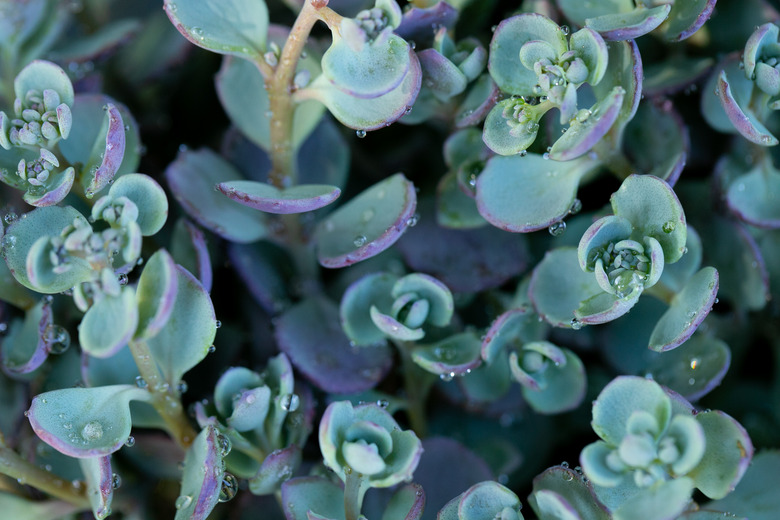Diseases For A Sedum
Sedums are perennial flowering plants with succulent foliage. Many different types of sedums exist, some growing to only 2 inches tall and others reaching 2 feet or larger in height. Sedum flower colors vary in shades of white, yellow, pink and red.
Sedums are low-maintenance plants that are susceptible to only a few fungal diseases, most of which are prevented by planting the sedums on well-draining soils. The University of Florida IFAS Extension recommends only occasional watering for sedums, because too much water promotes disease. The remedy for how to save dying sedums suffering from disease, however, isn't often possible.
Stem Rot Sedum Fungus
Stem rot disease is caused by the fungal pathogen Sclerotium rolfsii and is one of the most common diseases that affect sedums. Stem rot causes the sedum's lower leaves to turn yellow and white, cotton-like growths of mycelium to appear around or near the crown on the soil. Eventually, the whole plant will wilt and die.
Treating stem rot can be difficult and in severe cases may involve replacing all of the soil. Control stem rot in the sedums by cutting away and destroying all the diseased or symptomatic plant parts.
Basal or Root Rot
Basal rot is caused by the fungal pathogen Rhizoctonia solani. This fungus rots and collapses the basal stems and turns them black or brownish. Root rots are caused by Fusarium fungal pathogens and produce similar symptoms that are more centralized in the sedum's roots. Most fungicides are not effective in treating either basal or root rot. Remove and destroy sedums infected with these types of rot.
Powdery Mildew on Sedum
Powdery mildew (Erysiphe spp.) causes white powdery spores to cover the sedum's leaves. The University of Massachusetts-Amherst notes that powdery mildew may be confused with leaf spot disease at first glance. However, a closer look reveals white fungal threads that are characteristic of powdery mildew.
This fungal disease is most prevalent during humid conditions when there is little rainfall. Treat powdery mildew by applying an appropriate fungicide, such as potassium bicarbonate, triadimefon or thiophanate-methyl, to your sedums according to the instructions on the label.
Sedum Leaf Blotch and Spots
Several different leaf spot diseases can infect sedums, including those caused by fungal pathogens in the Cercospora, Colletotrichum and Septoria genera. Lesions or brown spots on sedum leaves that lead to decomposing or necrotic patches occur most often during wet conditions. How to treat sedum leaf spot is best achieved by applying a preventive fungicide such as thiophanate-methyl.
Sedum Botrytis Blight/Gray Mold
Gray mold, also known as Botrytis blight (Botrytis cinerea), is a fungal disease that causes a fuzzy gray mold to grow on the sedum's damaged or old flowers and leaves. The gray mold spreads to the healthy plant parts as the disease progresses. Gray mold disease is most prevalent during cool, wet environmental conditions and when old flowers or damaged plant parts remain on the sedum, providing an entry point for the fungal pathogens.
Remove all the dead or dying flowers from the sedum to prevent gray mold. If your sedums are already infected with gray mold, apply an approved fungicide like thiophanate-methyl.
Sedum Rust Disease
Rust diseases are caused by several fungal pathogens belonging to the Puccinia genus. Sedums with rust diseases have powdery and rust-colored spore growths on their leaves and stems with yellowed surrounding plant tissues. Control rust diseases by applying an appropriate fungicide to your sedums, such as mancozeb or sulfur.
